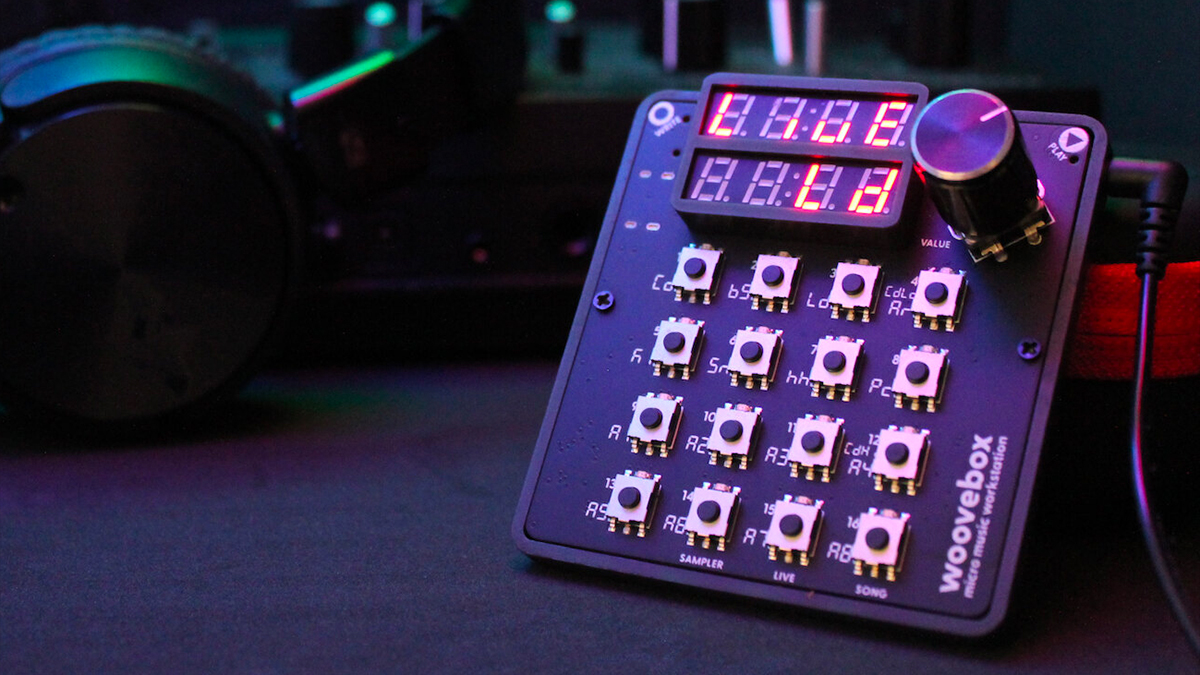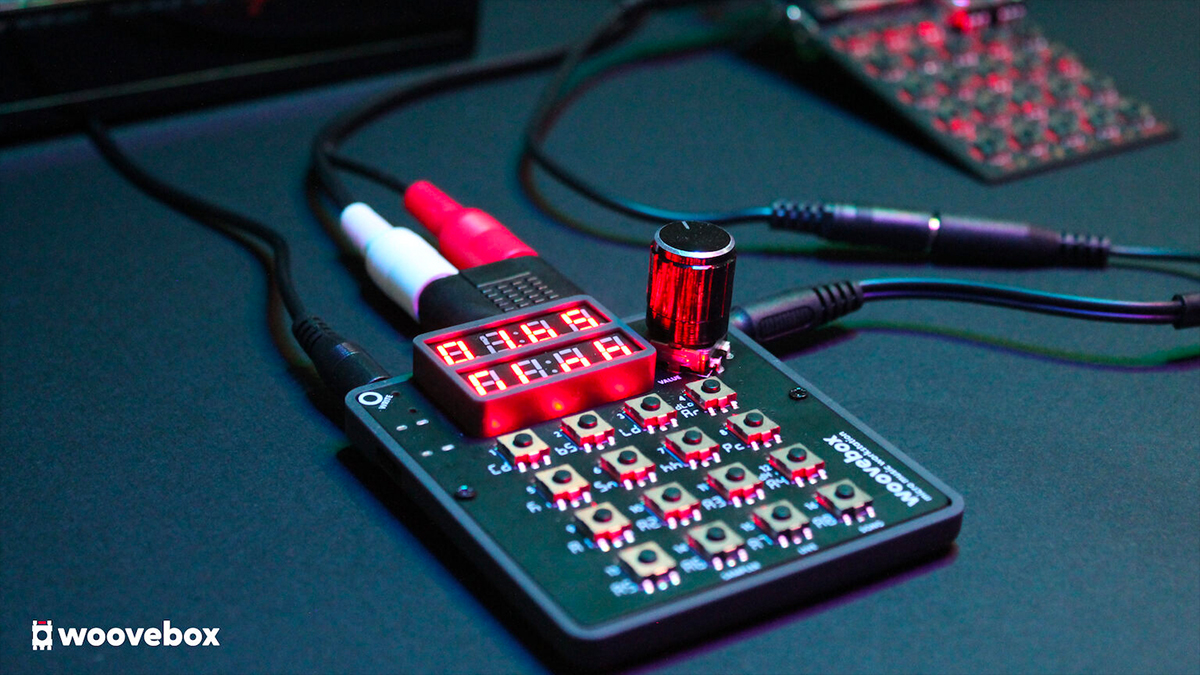Is the Woovebox "the smallest all-in-one micro music workstation on the planet"?
Pocket-sized device packs in a synth, sequencer and sampler
With its barebones design, it’s hard to look at Woovebox - billed as "the smallest all-in-one micro music workstation on the planet" - without being reminded of Teenage Engineering’s Pocket Operators, but it could actually turn out to be significantly more capable.
Billed as a pocket groovebox, synth, sequencer, sampler and drum machine, there’s a whole lot going on inside this dinky device. The synth, for example, is 16-part multitimbral, supporting one 4-voice polyphonic track and 15 4-voice paraphonic or mono tracks. It also offers 16 algorithms and 17 oscillator models, two of which can be used per voice. A filter, LFOs and effects are here, too.
On to the sequencer, which gives you 16 songs, 16 tracks, 16 patterns and - you guessed it - 16 steps to work with. We’re promised a fast workflow, the potential for polyrhythms and various other creative features, plus the option to export complete songs and/or stems to WAV files.
Finally, the 44.1kHz/8-bit sampler can be used to create 16 user kits of 16 samples. You can sample directly into the unit via the 3.5mm input or import samples digitally via Bluetooth, and there are mangling, slicing and chopping options, too. One-shots, loops and mutisampling are supported, and the live input can be used as an oscillator model. You can also resample the internal synthesizer.
To repeat, there’s a lot going on, and all in a very portable form factor. Control comes via 16 micro switches, a value knob and an LED screen, and there’s a USB port for charging the internal battery.
The Woovebox is currently out of stock, but more units are expected in October. The price is $249, and you can get your order in over on the Woovebox website.


Get the MusicRadar Newsletter
Want all the hottest music and gear news, reviews, deals, features and more, direct to your inbox? Sign up here.



I’m the Deputy Editor of MusicRadar, having worked on the site since its launch in 2007. I previously spent eight years working on our sister magazine, Computer Music. I’ve been playing the piano, gigging in bands and failing to finish tracks at home for more than 30 years, 24 of which I’ve also spent writing about music and the ever-changing technology used to make it.









